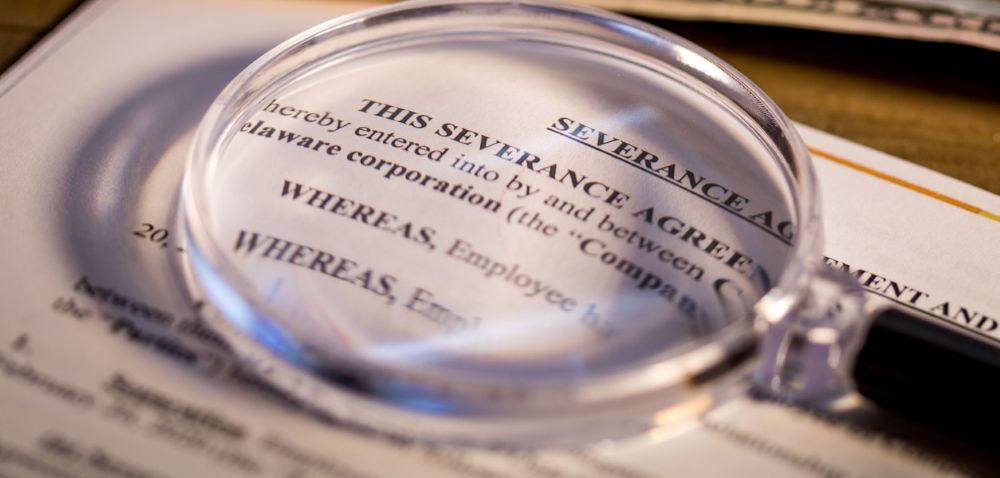8 Actions That Can Lead To Constructive Dismissal Claims Against An Employer
8 Actions That Can Lead To Constructive Dismissal Claims Against An Employer
By Ashley Thiel, Senior HR Consultant, AugmentHR
Employers fire employees all the time. It's part of running a business. However, the
way
you let an employee go needs to comply with Canadian labour and employment laws. Failure to follow the rules could result in employers facing constructive dismissal claims, which could result in legal repercussions.
As a Senior HR Consultant with extensive experience in Ontario’s employment landscape, constructive dismissal remains, in my opinion, one of the more complex and often misunderstood aspects of employment law. So this blog, I’ll share my 17 years of HR consulting & outsourcing for clients big & small to use to provide you, the employer, with an overview of constructive dismissals and what you need to know about it.
Below, we’ll discuss the following:
- What is the meaning of constructive dismissal?
- What is the difference between wrongful dismissal and constructive dismissal?
- What is constructive dismissal in Canada?
- Is constructive dismissal illegal in Canada?
- What is the test for constructive dismissal?
- What are some examples of constructive dismissal? (We provide 8)
- What are the five fair reasons for dismissal?
- What are the consequences of constructive dismissal claims?
- Actions employers can take to avoid constructive dismissal issues
What is the meaning of constructive dismissal?
In essence, constructive dismissal occurs when an employer makes substantial changes to the terms of an employee’s contract without consent, such as reducing compensation, demoting the employee, or creating a toxic work environment, effectively forcing the employee to resign.
In other words, it’s when an employee resigns from their job because their employer has made their working conditions so difficult or intolerable that the employee feels they have no choice but to leave. In legal terms, it's treated as if the employee was forced out or dismissed, even though they technically resigned.
What is the difference between wrongful dismissal and constructive dismissal?
Wrongful dismissal and constructive dismissal both refer to the firing of an employee, but they are different actions by employers. The difference between wrongful dismissal and constructive dismissal is how the employment ends and who is responsible for the breach of contract.
Wrongful dismissal happens when an employer ends the employee's contract without giving proper notice or without following the terms of the employment contract. The issue is usually
about the process, not the reason (e.g., no notice, no pay instead of notice).
Constructive dismissal happens when the employee resigns because the employer breached the terms of the contract. It is a forced resignation due to unacceptable changes or treatment. The employer doesn’t directly fire the employee, but their actions make staying in the job impossible.
What is constructive dismissal in Canada?
The
Government of Canada defines constructive dismissal in the following way:
The phrase "constructive dismissal" describes situations where the employer has not directly fired the employee. Rather the employer has:
- failed to comply with the contract of employment in a major respect
- unilaterally changed the terms of employment, or
- expressed a settled intention to do either thus forcing the employee to quit
Constructive dismissal is sometimes called "disguised dismissal" or "quitting with cause". This is because it often occurs in situations where the employer offers the employee the alternative of:
- leaving, or
- submitting to a unilateral and substantial alteration of a fundamental term or condition of their employment
Is constructive dismissal illegal in Canada?
Yes. Constructive dismissal is not a lawful or acceptable practice. Employers are not allowed to deliberately create intolerable working conditions to force an employee to quit. Doing so can violate employment laws in Canada. Employers have a legal duty to maintain a safe, respectful workplace and to honour the terms of employment contracts.

What is the test for constructive dismissal?
As HR consultants, we’re often asked to advise clients if they’re at risk. You can ask yourself these questions. The Supreme Court of Canada established a test for constructive dismissal as part of its decision in
Potter v. New Brunswick Legal Aid Services Commission, 2015 SCC 10. They found that an employee is constructively dismissed (aka Illegally) if one of these two tests is applicable:
1. Single Unilateral Change:
This occurs when:
(a) The employer makes
a change on their own, without the employee’s agreement, that breaks a specific or implied term of the employment contract, and
(b) That change significantly affects a fundamental part of the employee’s job.
To assess part (b), the question is whether a reasonable person in the employee’s position would view the change as a serious alteration of an essential term of employment.
2. Series of Acts:
Instead of one major change, the employer engages in
a pattern of behaviour that, taken together, shows they no longer intend to follow the terms of the employment contract.
What are examples of constructive dismissal? Here’s 8.
Constructive dismissal can take on many forms. The following actions by employers can be considered
an attempt to get an employee to quit:
- A significant cut in pay or hours without agreement
- Being demoted without a valid reason
- Being bullied, harassed, or treated unfairly by managers or coworkers
- Sudden and unreasonable changes to job duties or location
- Unsafe or hostile work environment
- A significant increase in work duties or responsibilities
- Refusal to make reasonable accommodations for an employee
- Unwarranted and unjustified suspensions
In my experience, many employers inadvertently cross the constructive dismissal line when trying to make operational changes, unaware that even well-intentioned decisions, like modifying job duties or reducing hours during a restructure, can legally equate to a dismissal if not handled correctly.
What are the five fair reasons for dismissal?
In Canada, there are five potentially fair reasons for dismissal:
- Conduct: An employee's actions and behaviour at work.
- Capability: An employee's ability to perform the job duties.
- Redundancy: The employer no longer requires the employee's job due to restructuring or a reduction in workforce.
- Statutory Illegality: It becomes illegal for an employee to continue working due to a statutory restriction or illegality.
- Other substantial reason: A broad category that encompasses other justifiable reasons for dismissal.
What are the consequences of constructive dismissal claims?

There are four main potential consequences if an employer faces a constructive dismissal claim:
Legal Liability:
The employer may have to
pay compensation for lost wages, benefits, or damages. In some cases, they may also be ordered to
reinstate the employee.
Reputational Damage:
A constructive dismissal case can harm the company's reputation, especially if it becomes public. This could hurt their ability to recruit new employees.
Cost of Legal Proceedings:
Defending against a claim can be
time-consuming and
expensive, even if the employer wins.
Workplace Disruption: Claims may lead to lower morale among remaining staff or prompt internal reviews and policy changes.
What actions can employers take to avoid constructive dismissal claims?
In dealing with constructive dismissal cases, one of the key considerations I stress to clients is communication. Transparent dialogue and documented agreements are essential. I’ve advised employers to consult HR early in the process when even contemplating significant employment changes. It’s also crucial to give employees time to consider changes and offer alternatives where possible.
From a risk management perspective, employers should conduct a thorough impact assessment to evaluate how proposed changes align (or not!) with the original employment agreement to fully understand if the changes may be interpreted as constructive dismissal.
A final word about constructive dismissal
Ultimately, avoiding constructive dismissal is about preserving the employment relationship through fairness, clarity, and mutual respect. Taking care to ensure that you are making decisions that are essential for your business longevity and growth, but also ones that are made thoughtfully and with a clear understanding of employment obligations.
Need help lowering your HR risk? The experienced HR consultants at AugmentHR provide a number of HR Compliance services, including creating anti-harassment policies and iron-clad employee notices, plus team training and outplacement services.
_________________________
Ashley Thiel is an accomplished senior HR professional with 17 years of experience as an HR manager and educator. In addition to being a senior HR manager for brands like Foot Locker & Ralph Lauren, Ashley has served as an adjunct professor specializing in Human Resources & Organizational Behaviour at one of Ontario’s leading colleges. She is a senior HR consultant at AugmentHR, an HR services company, providing veteran advice on HR and organizational needs for a variety of clients, large and small.
Need More HR Tips on Lowering Your Risks & Outplacement. Check out these posts:
- Don’t Take Risks. A Guide to HR Compliance Peace of Mind for Business Owners
- A Workplace Harassment Policy Guide to Create A Safer Environment for Employees
- An Employer’s Guide To Outplacement Services












